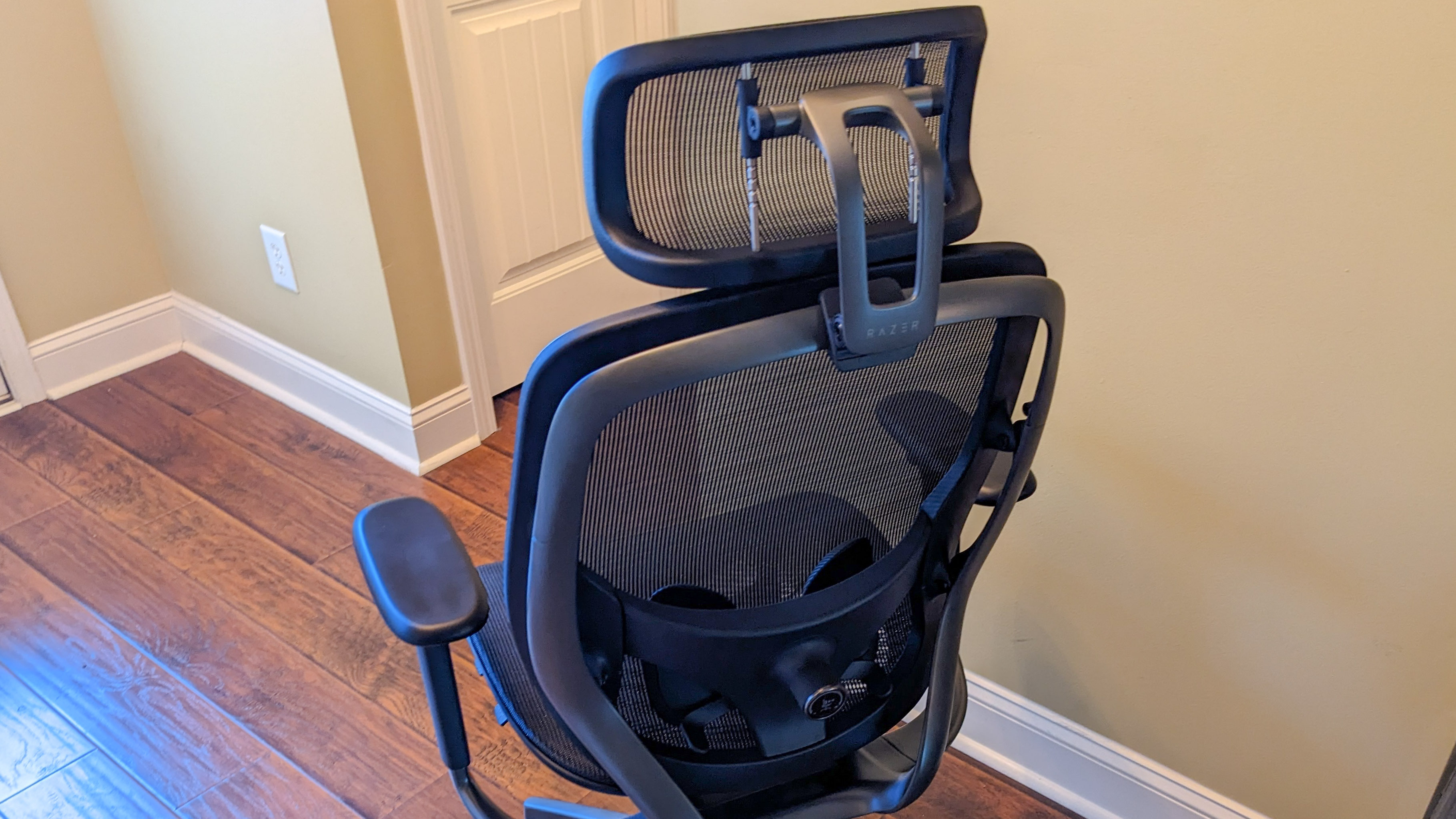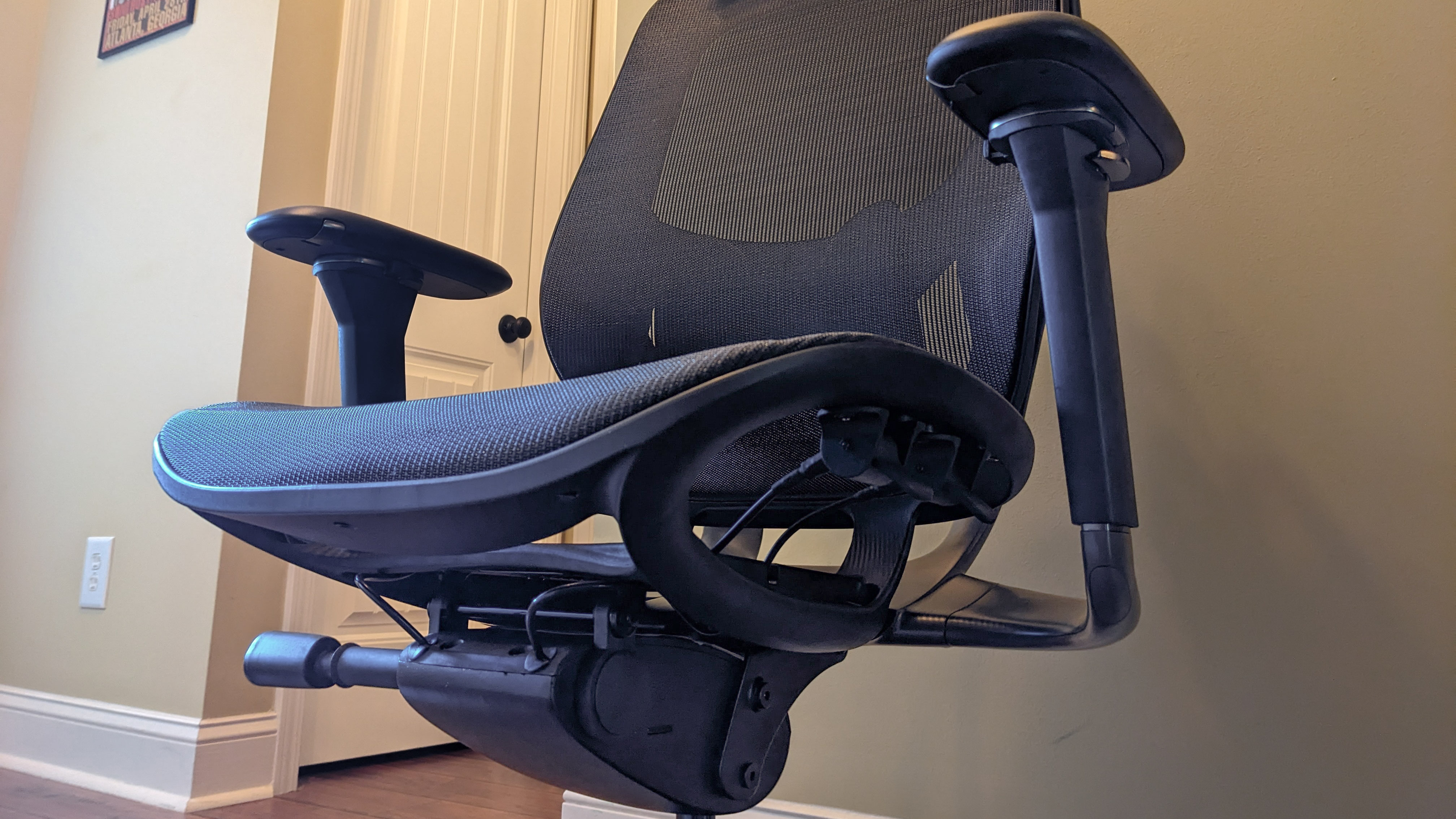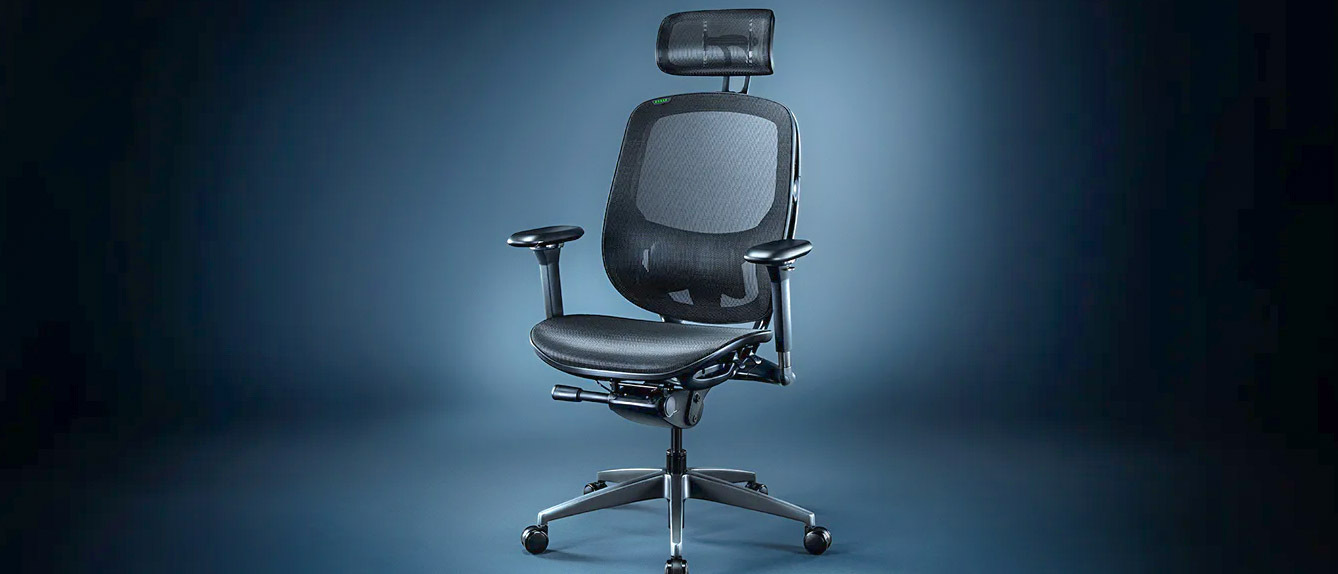Tom's Guide Verdict
The Razer Fujin Pro is a phenomenal option for anyone shopping in the premium gaming chair space thanks to first-rate build quality, well-implemented adjustment options, and A+ comfort.
Pros
- +
Easy assembly
- +
Very comfortable
- +
Great lumbar support
- +
Fantastic build quality
Cons
- -
Questionable warranty
Why you can trust Tom's Guide
The Razer Fujin Pro is a gaming chair that can effortlessly blend into an office room, too, thanks to its conservative visual style. However, this pricey seating option comes with plenty of bells and whistles alongside exceptional comfort that ensures that it's also perfectly suited to being used in either setting — that is, provided you're willing to spend the $1049 asking price.
Our Razer Fujin Pro review will help you determine if such a high asking price will pay off with equally high comfort or if your money would be better spent on another one of the best gaming chairs instead. Likewise, is the Razer Fujin Pro more of a gaming chair or does it deserve a place among the best office chairs too?
Razer Fujin Pro review: Price and availability
The Razer Fujin Pro is available directly from Razer's site for $1049. There is only a single version of the chair, and there's nothing in the way of add-ons to apply, so you won't have any extra costs to consider when purchasing. That being said, the standard Razer Fujin can still be purchased for $649, but it lacks the aluminum alloy frame and mesh headrest found on the Razer Fujin Pro.
At this price point, the Razer Fujin Pro comes in much lower than the newest version of the Herman Miller Aeron, though the latter remains the undisputed champion of comfort and offers a better warranty provided you're willing to shell out an even more staggering amount of money for a chair.
Razer Fujin Pro review: Design and comfort

The Razer Fujin Pro is an unassuming seat that sports an aesthetic similar to the best office chairs as opposed to the flashy and bulky design of most modern gaming chairs. As a matter of fact, those walking into your space would be unlikely to even acknowledge its traditional gaming chair features if you didn't point them out. Additionally, unlike the usual over-branding of flashier chairs, Razer opted to be unpretentious by only stitching its name into a small area on the mesh of the front of the chair. You can spot the name again on the back of the lower part of the headrest, but it's so small and unobtrusive that you'd be forgiven for missing it entirely. Depending on your preferences, this will be a good or bad thing — but as someone who uses my chairs primarily for work, I appreciate the subtlety.
While the Razer Fujin Pro may not sport any eye-catching visual elements for those looking to make a statement, it sports an impressive build quality that makes for both a pleasant sitting experience and a reassuring sense of stability. Its aluminium alloy frame is incredibly sturdy and supports up to 300lbs, but it's really the gorgeous and durable mesh material that make it such a lovely chair to sit in. It's very breathable while offering great support and comfort that makes extended gaming or work sessions a joy.

The mesh headrest can be positioned ideally for resting your head or neck on for a few minutes, though I didn't find I needed it much because the adjustable lumbar support is significantly better than anything you'll get in the average gaming chair. Couple this with the fact that the backrest actually shifts forward and backward based on the weight you're applying to it, and it doesn't take long to realize you're in ergonomic heaven. As such, my posture has improved any time I'm using the chair, and I almost never feel fatigued or stiff after prolonged sitting.
Get instant access to breaking news, the hottest reviews, great deals and helpful tips.

Even with such noteworthy lumbar support, though, it's really the armrests on the Razer Fujin Pro that have been earning the most adoration from me, as they offer by far the most comfortable padding on any of the many gaming chairs I've owned. Despite the nerve damage in my elbows, the soft foam has made it so that I'm able to rest them on the armrests for hours without so much as a hint of discomfort. As expected, being able to adjust the height and spacing of the armrests only sweetens things further, giving you plenty of choice in precisely how you'd like to support your arms while playing or typing.
If it's not clear yet, every element of the Razer Fujin Pro screams "premium" — which makes it all the more shocking that the chair's warranty is so poor. Though the frame has a five-year warranty, the mesh material and armrest padding are only covered for one year. Most chairs at this price point offer upwards of 10 years across all parts of the build, so it doesn't really make sense for Razer to be so stingy. While I have no worries about the chair's long-term viability, I'd argue that the warranty limitations are worth considering at such a premium price point. Anything can happen, after all, and that's a lot of money down the drain if you get unlucky.
Razer Fujin Pro review: What’s adjustable
The Razer Fujin Pro's office chair design language and focus on comfort doesn't translate to a loss in gaming chair functionality. Instead, the Razer Fujin Pro actually features some of the best adjustability I've seen in the space, going above and beyond in a few key spots that other gaming chairs tend to fumble.
Industry standard stuff is all here, like adjusting the height with a lever on the right side of the seat pan or moving the 4D armrests up/down, left/right, and in/out at any time with the click of a few buttons. You'll also find that you have a good bit of customization over the contoured headrest — or you could even remove it altogether by unscrewing a single screw if you were to be so inclined.
A minority of buyers who spend a lot of time heavily reclined may be a little disappointed to hear that the Razer Fujin Pro can't recline into a near-horizontal state like a lot of modern gaming chairs on the market. However, I actually prefer the more flexible implementation here. There's no reclining lever to be found at all, meaning it relies on you to apply your weight to lean back up to a cozy but reasonably limited 130 degrees. This on-the-fly reclining is efficient and allows you to maintain your lumbar support and stability without any additional effort on your end, and it's still enough of a recline to offer some relaxation while you're waiting for your next match to start.

But it's that lumbar support that is really something special. Not only can you adjust the intensity of the support using the knob in the center of the back of the chair — you can adjust the location up and down based on your own height by using a slider in the same area. Hell, you can even use a lever on the left of the chair to move the seat pan out to allow extra coverage for taller users or bring it in for those who need less leg support, which also plays a part in finding that lumbar support sweet spot.
Having so much control over the positioning of such key components of comfort and ergonomics is welcomed, and the ease in which these things can be changed makes it a breeze to quickly adjust back and forth for multi-user households. These features aren't exclusive to the Razer Fujin Pro, of course — but like nearly everything else on this high-end chair, it all just feels and functions better than most of the competition and makes for an enjoyable user experience.
Razer Fujin Pro review: Assembly

Given how frustrating many gaming chairs can be to put together, the Razer Fujin Pro's uncomplicated construction is a breath of fresh air. Unboxing the chair is quick and simple due to efficient packaging, and the straightforward assembly process should take the average person 15 minutes or so to complete.
As with basically all gaming chairs, attaching the base to the seat pan is the most strenuous aspect of assembly. That's not to say it's complicated whatsoever, but rather than the chair's hefty weight could make lifting and aligning the screw holes a bit tough for a single assembler. It shouldn't pose a major issue for most buyers, but it couldn't hurt to have two sets of hands on the job if possible, especially if you've got pre-existing back problems.
From the headrest to the armrests to the wheelbase, everything else is delightfully easy because of some smart inclusions, such as slots for the armrests to slide into to hold them in place as you screw them into the seat pan. I was done assembling the Razer Fujin Pro in the time it took my oven to preheat, and my reward was sitting comfortably in the chair while I ate some considerably less rewarding leftover pizza.
Razer Fujin Pro review: Verdict
The Razer Fujin is a comfortable, featured-packed chair that can fit an office environment just as easily as a gaming room without sacrificing any of the features gaming chair enthusiasts have come to appreciate. And although it comes with a surprisingly poor warranty that doesn't really align with its high-quality materials and stability, this premium chair does so much right that it's an easy recommendation for anyone who can stomach its high price point.
Billy Givens is a journalist with nearly two decades of experience in editing and writing across a wide variety of topics. He focuses particularly on games coverage for Tom's Guide and other sites including From Gamers Magazine, Retroware, Game Rant and TechRaptor. He's also written for self-improvement sites such as Lifehack and produced in-depth analyses on subjects such as health, psychology and entertainment.


